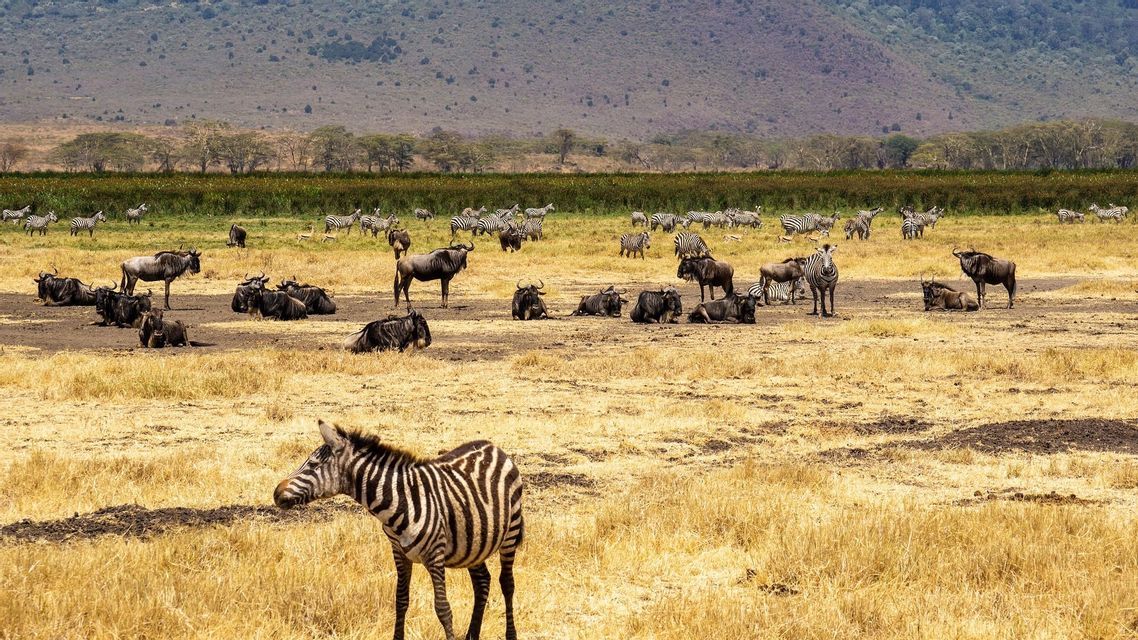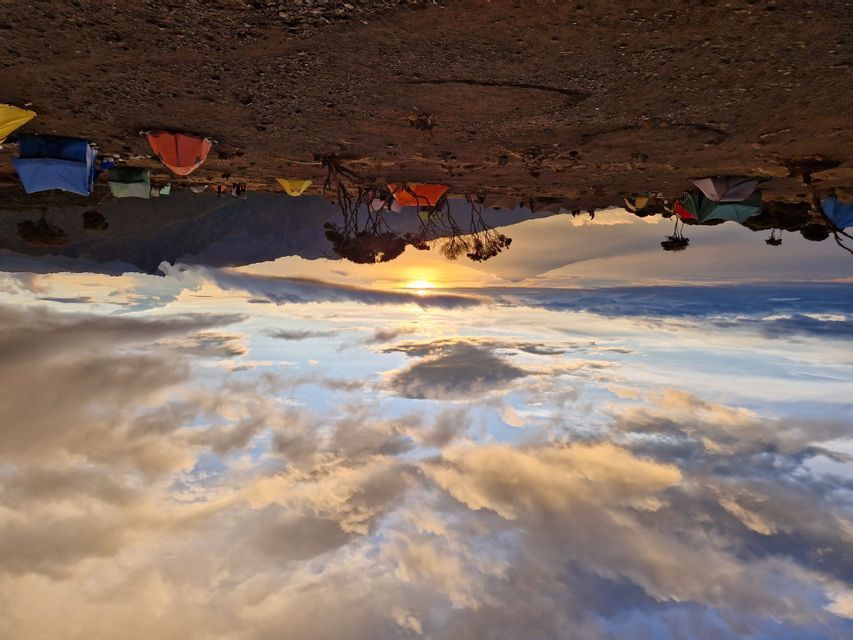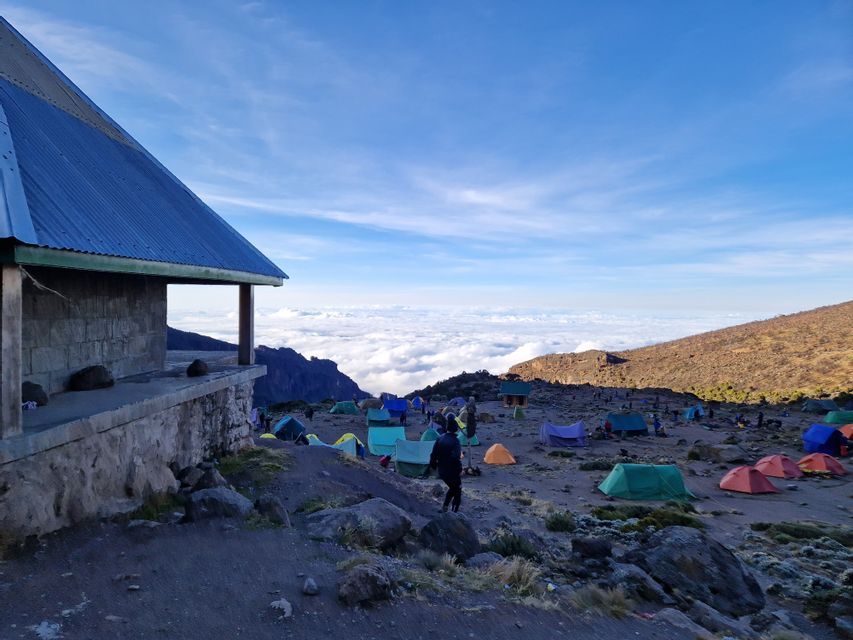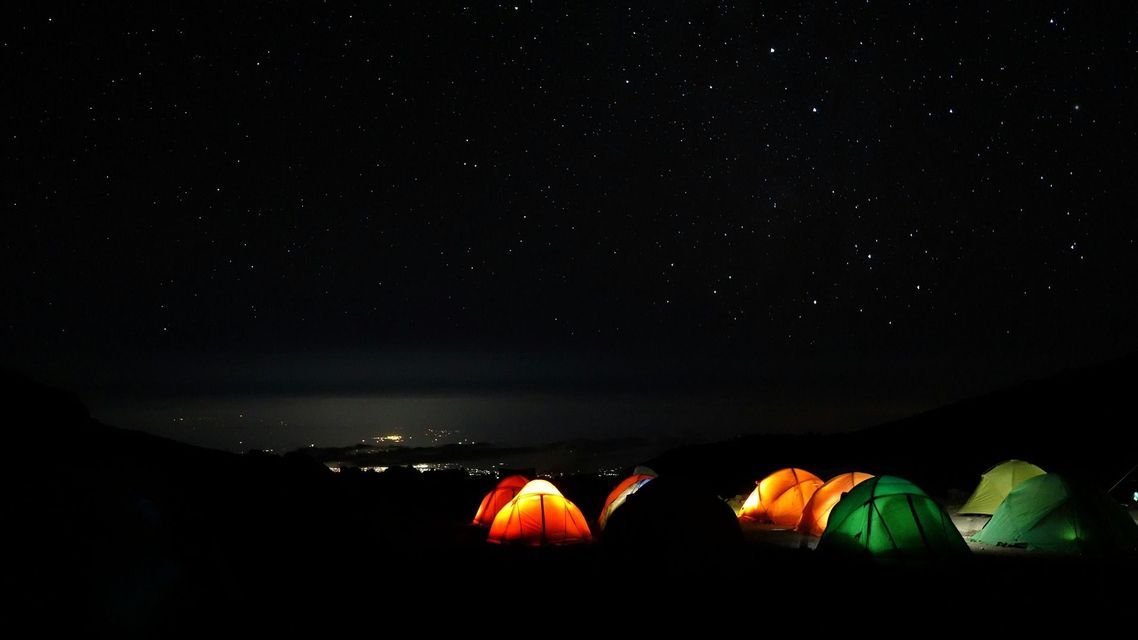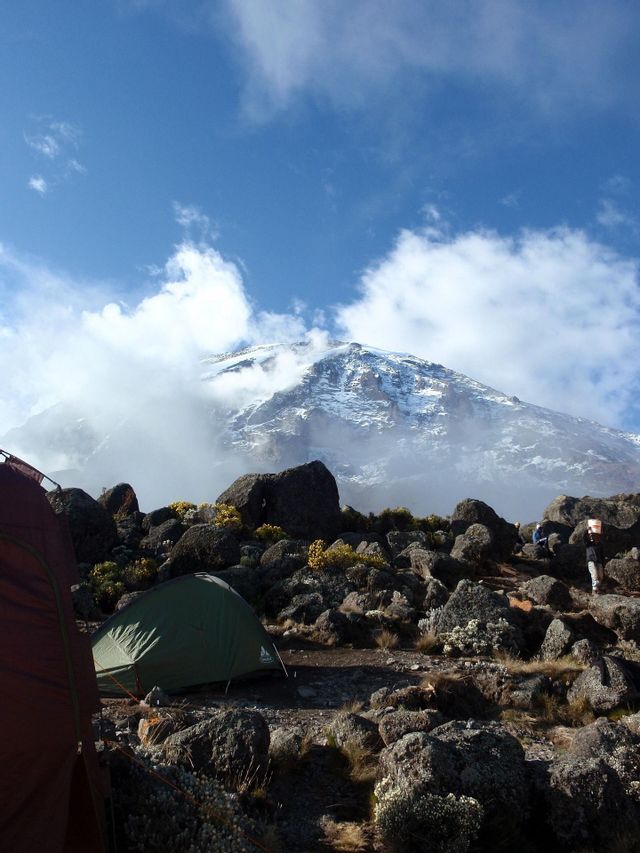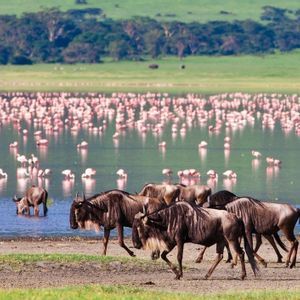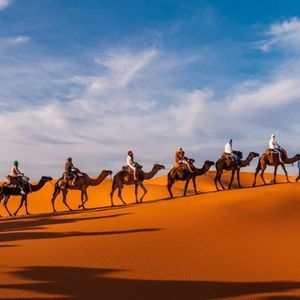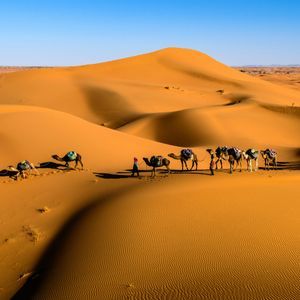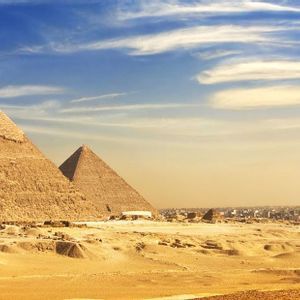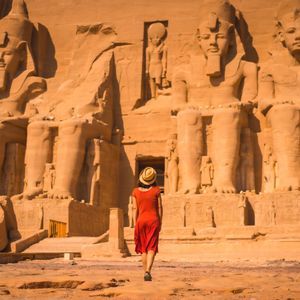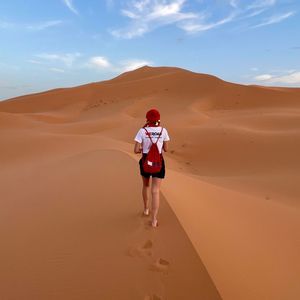Tanzania Trekking: Mt Kilimanjaro Summit & Safari Expedition
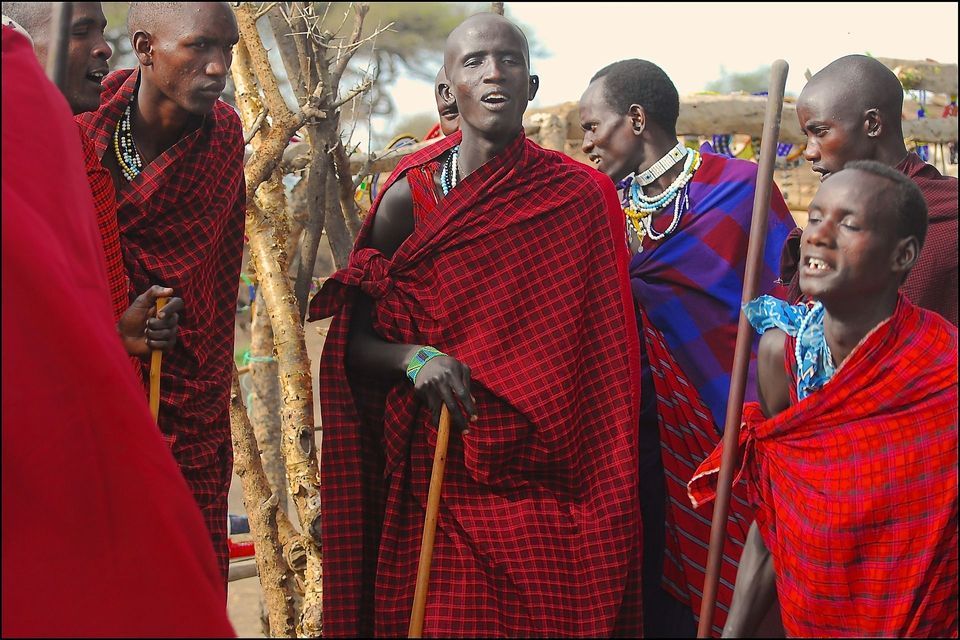
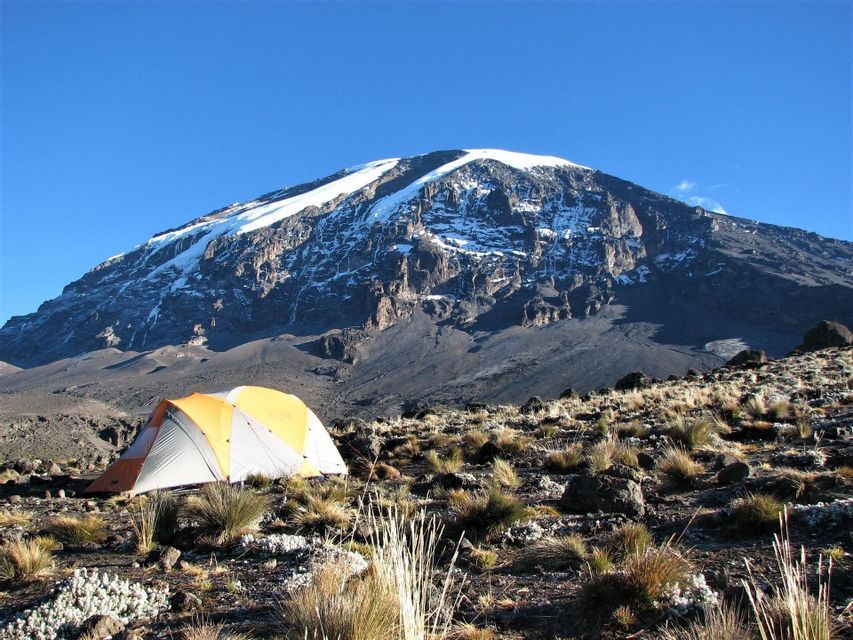
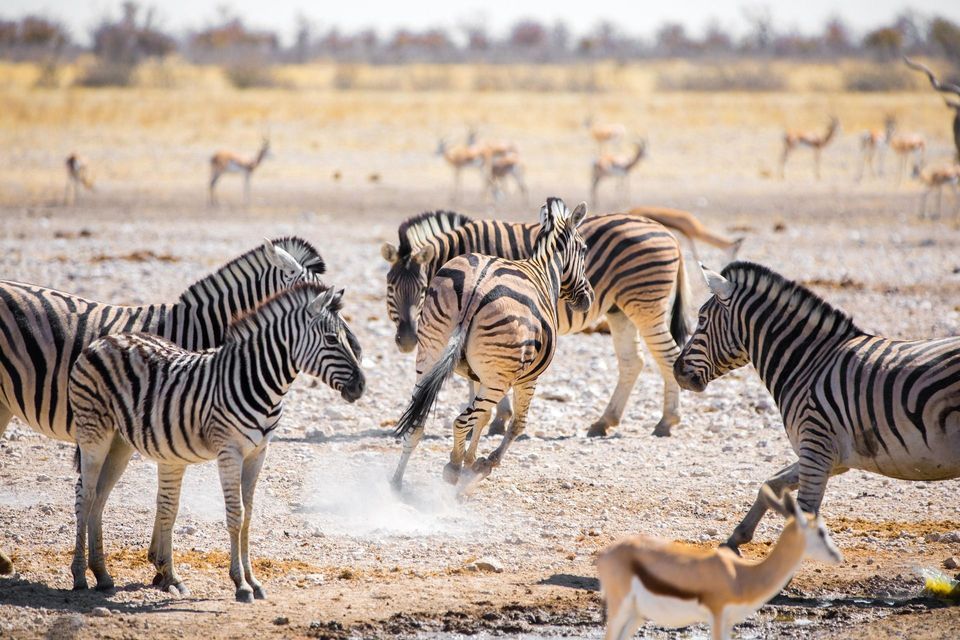
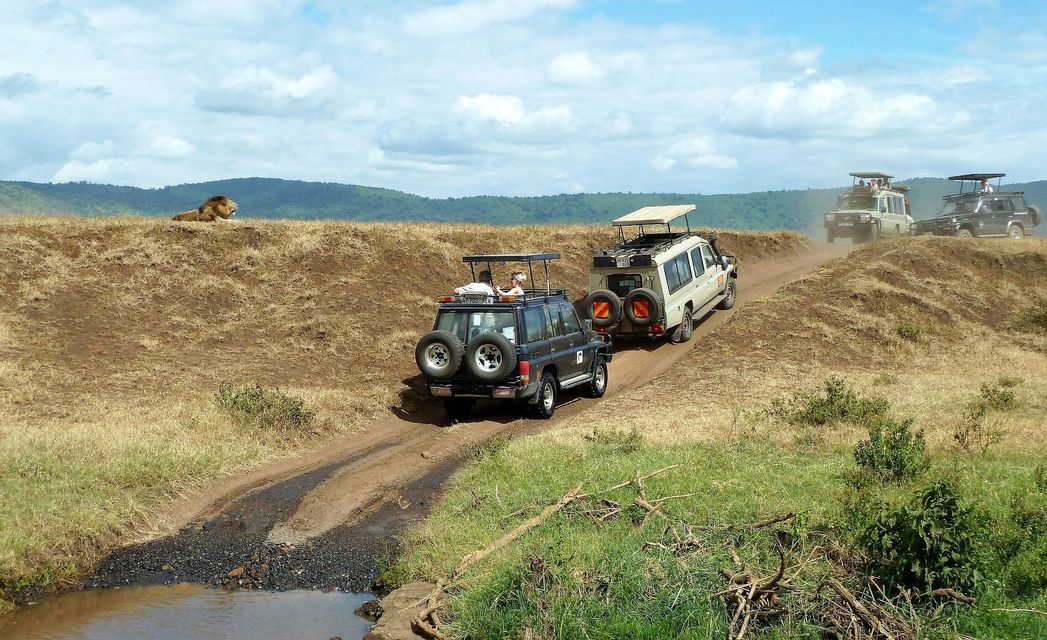
Group info
Show
group info
People interested: 4
Expected WeRoaders: 8
Itinerary
This is the trip of a lifetime for those who dream big and crave the wild. From trekking to the summit of Mount Kilimanjaro, the Roof of Africa, to exploring the wildlife-rich plains of Tanzania’s most iconic national parks, every moment of this journey is designed to leave you breathless. We’ll follow the spectacular Machame Route, hiking through lush rainforests, across volcanic ridges, and up to the 5,895-meter-high Uhuru Peak, all under the guidance of expert local staff. Nights are spent under the stars, and days are filled with views above the clouds. This isn’t just a climb, it’s a unforgettable experience.
After conquering Kilimanjaro, we trade boots for binoculars and venture into Arusha, Tarangire, and Ngorongoro National Parks, where we’ll encounter elephants, lions, rhinos, giraffes, hippos, and more in their natural habitat. The Ngorongoro Crater, a UNESCO World Heritage Site, boasts the highest density of wildlife on Earth, a true Eden for nature lovers. This unique combination of high-altitude trekking and world-class safari offers a rare blend of physical challenge, natural beauty, and unforgettable wildlife encounters. Tanzania is calling. Will you answer?
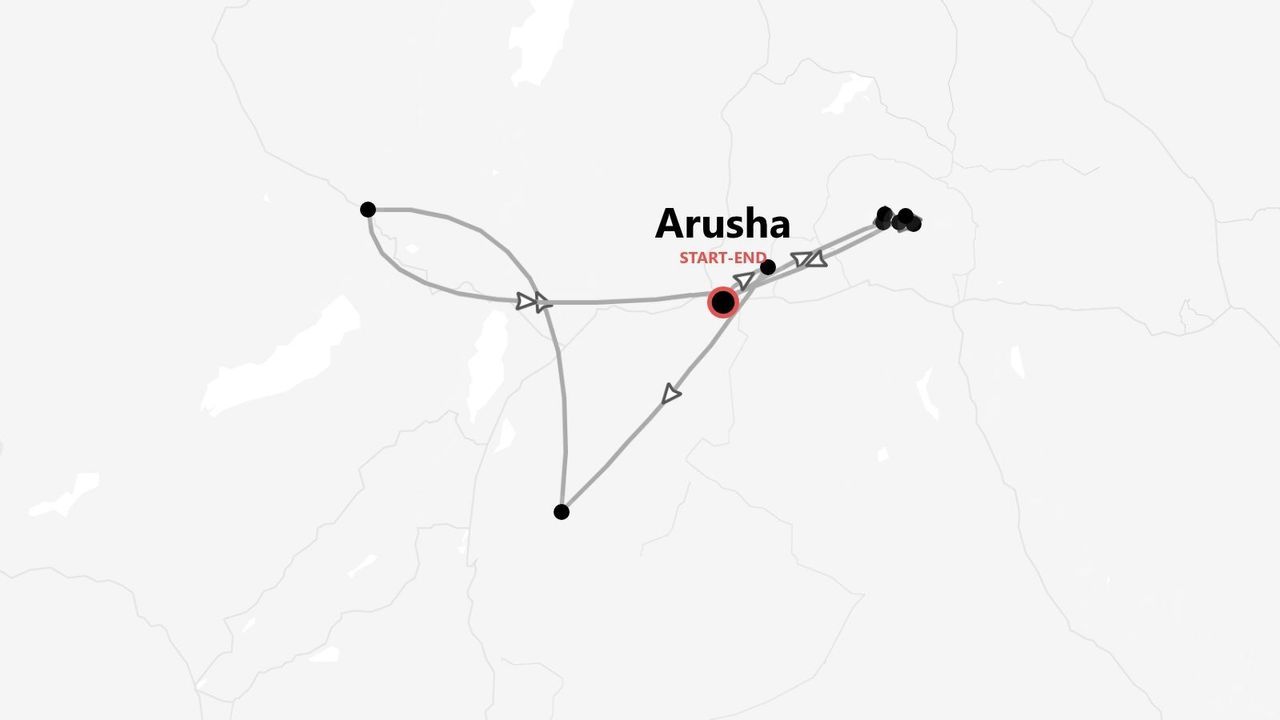
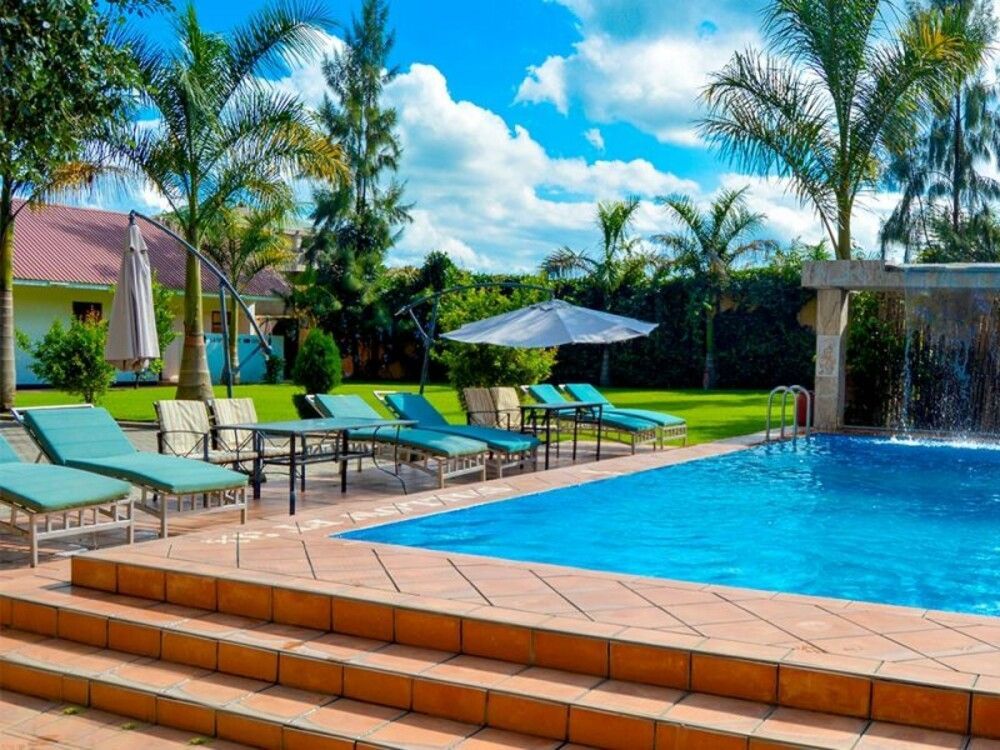
Arrival Day
Your Tanzanian Adventure Begins!
You've been dreaming of your Tanzanian trip for so long, and the day has finally arrived! Once you arrive in Arusha, you'll head to your accommodation where you can settle in and relax. Settle in, swim in the pool, or simply relax and adjust to the new time zone surrounded by tropical greenery. In the evening, we’ll gather for a briefing about the journey ahead.
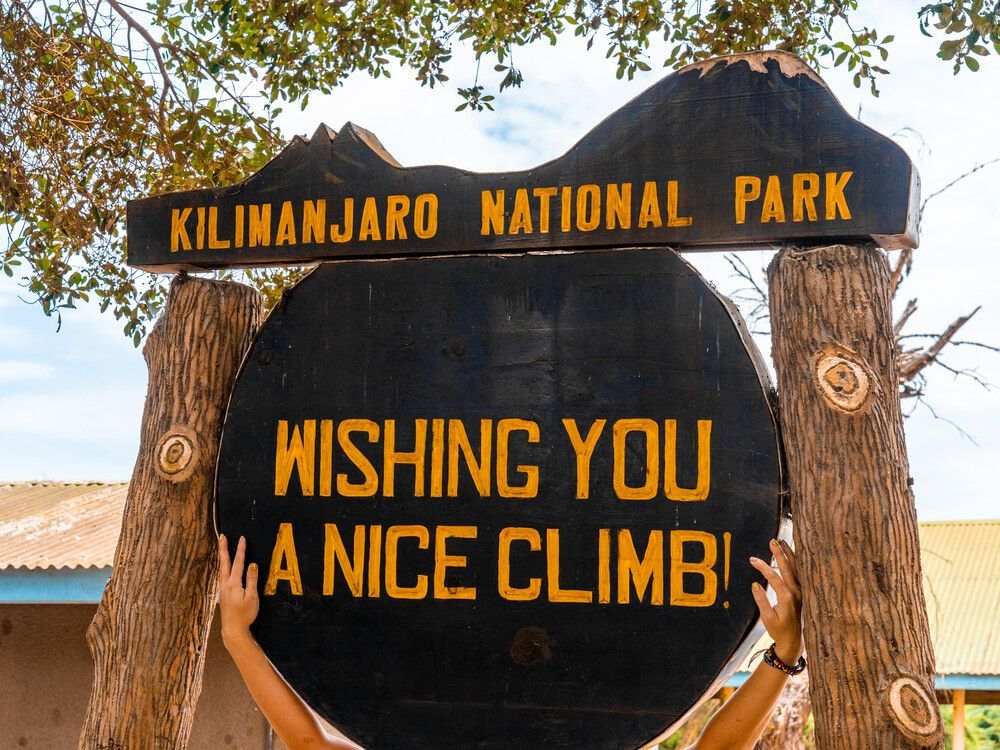
Start the Climb from Machame Gate
Into the Rainforest
After an early breakfast, we’ll drive through Machame Village to Machame Gate, the starting point of our Kilimanjaro ascent. After registration, we’ll begin trekking through dense montane rainforest on a winding trail. Expect muddy and slippery terrain; gaiters and trekking poles are helpful. By late afternoon, we’ll arrive at Machame Camp, enjoy dinner, and take in our first night under the stars.
Elevation: 1,830m → 3,050m
Distance: 11 km (7 miles)
Hiking Time: 5–6 hours
Habitat: Montane Forest
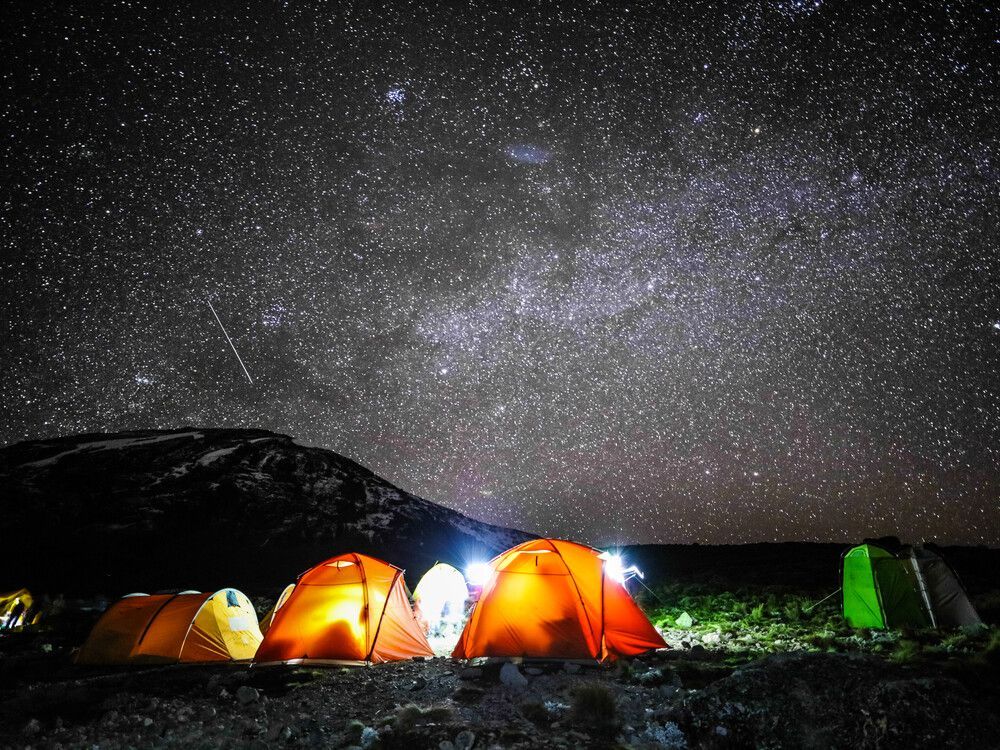
Machame Camp to Shira Camp
Into the Moorlands of Kilimanjaro
We’ll ascend from the rainforest into the moorland zone, crossing valleys and climbing a rocky ridge with sweeping views of the Shira Plateau. After reaching Shira Camp, we’ll break for lunch and take a short acclimatization hike toward Lava Tower, then return to camp for the evening.
Elevation: 3,050m → 3,850m
Distance: 5 km + acclimatization walk
Hiking Time: 4–5 hours
Habitat: Moorland
Included: accommodation, breakfast, lunch, dinner
Money Pot: tips
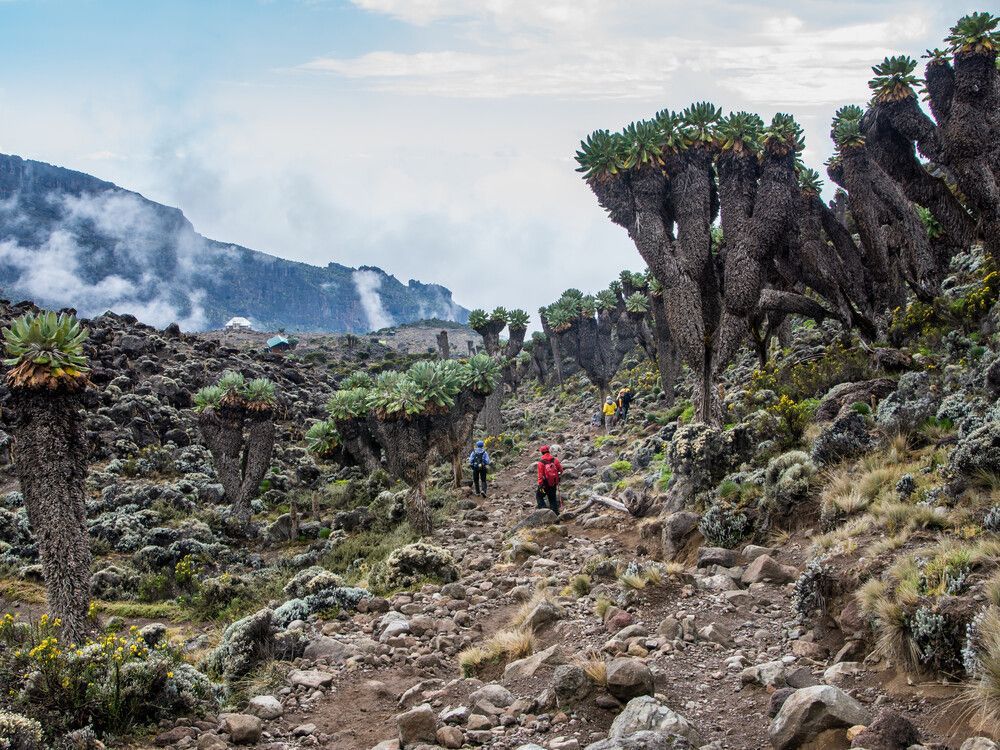
Shira Camp to Lava Tower to Barranco Camp
Climb High, Sleep Low
Today is key for acclimatization. We'll trek past a junction leading toward Kibo Peak and ascend to the striking Lava Tower, also known as the "Shark’s Tooth," standing at 4,650m (15,250ft). After a break near the tower, we’ll begin your descent to Barranco Camp. Though we’ll end the day at a similar elevation to where we started, this hike will be key for acclimatization and preparing the body for the summit day ahead.
Elevation: 3,850m → 4,650m → 4,000m
Distance: 10 km
Hiking Time: 5–6 hours
Habitat: Semi-desert
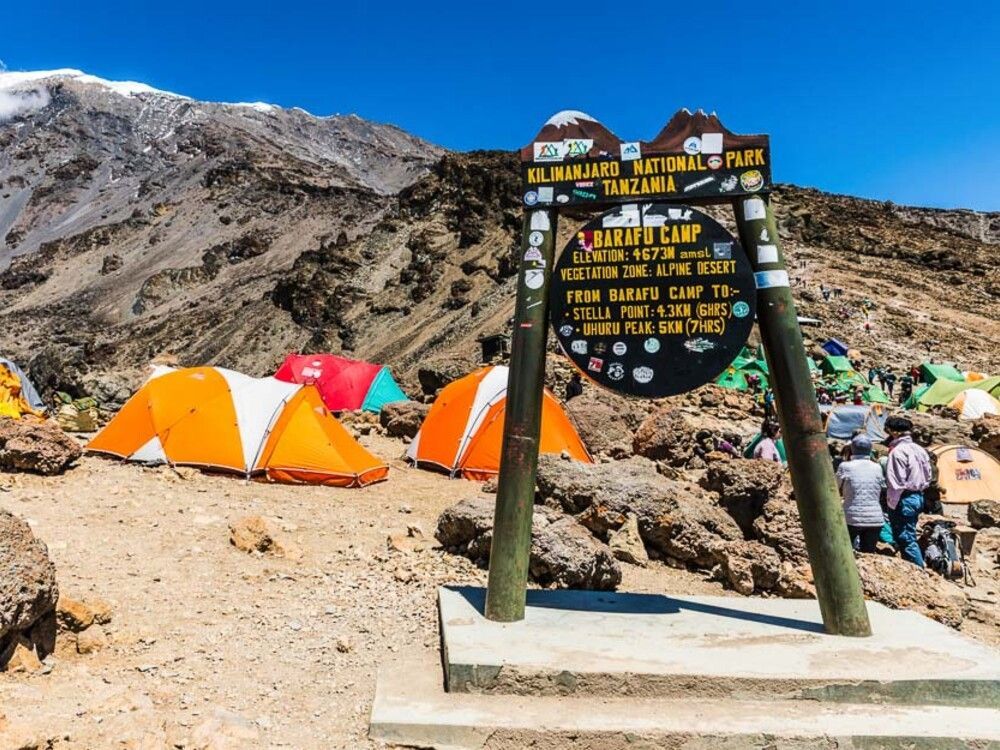
Barranco Wall to Karanga to Barafu Camp
The Wall and Beyond
An early start takes us up the steep Barranco Wall (elevation 4,250m / 13,900ft), an unforgettable scramble with rewarding views. From there, we’ll head to the scenic Karanga Valley (4,050m / 13,250ft) for a short rest before continuing upward. We’ll then join the Mweka Trail and ascend to Barafu Camp, our base for the summit push. At this stage, we’d have completed the Southern Circuit, which offers incredible views of Kibo Peak from multiple angles. We’ll enjoy dinner and rest while soaking in views of the summit, we’ll be heading there very soon!
Elevation: 4,000m → 4,700m
Distance: 9 km
Hiking Time: 6–8 hours
Habitat: Alpine Desert
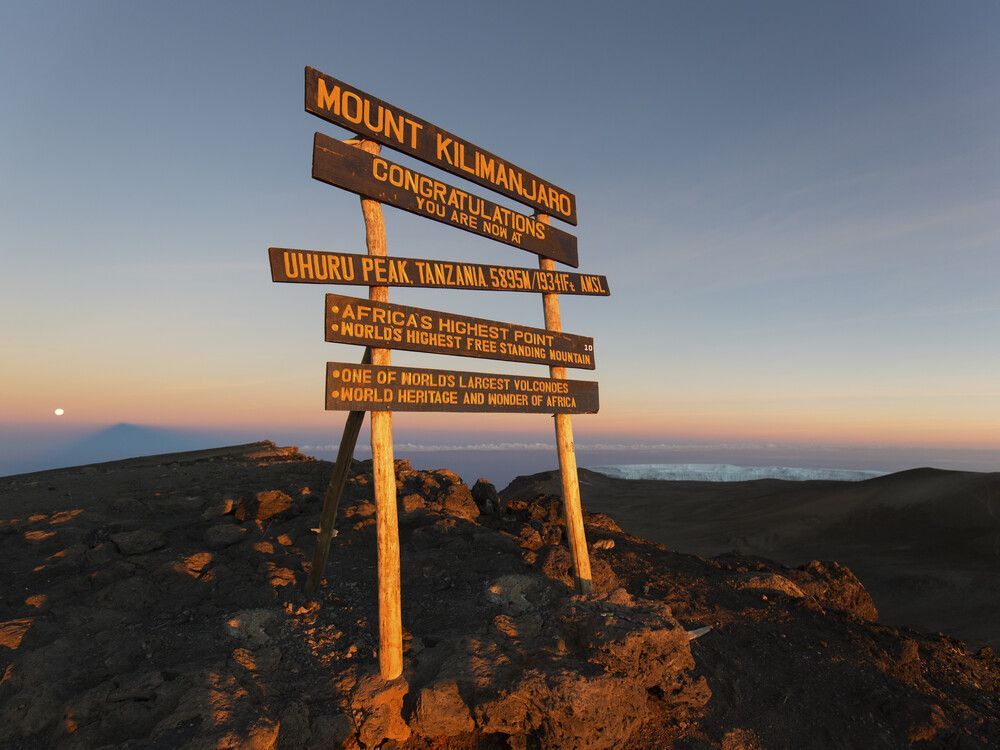
Summit to Uhuru Peak & Mweka Camp
The big day is here, to the Roof of Africa!
We’ll begin our final ascent in the early hours of the night, climbing between the Rebmann and Ratzel Glaciers. The trail winds up steep scree toward Stella Point, the toughest part of the climb, both mentally and physically. At Stella Point, we’ll pause to witness a stunning sunrise before pushing on for about an hour, possibly through snow, to reach Uhuru Peak (5,895m), the highest point in Africa. We made it!
After celebrating at the summit, we’ll descend to Barafu Camp for lunch and a rest, then continue down to Mweka Camp (3,090m) for our final night on the mountain.
Elevation: 4,700m → 5,895m → 3,090m
Distance: 5 km ascent, 13 km descent
Hiking Time: 10–13 hours
Habitat: Arctic zone to forest
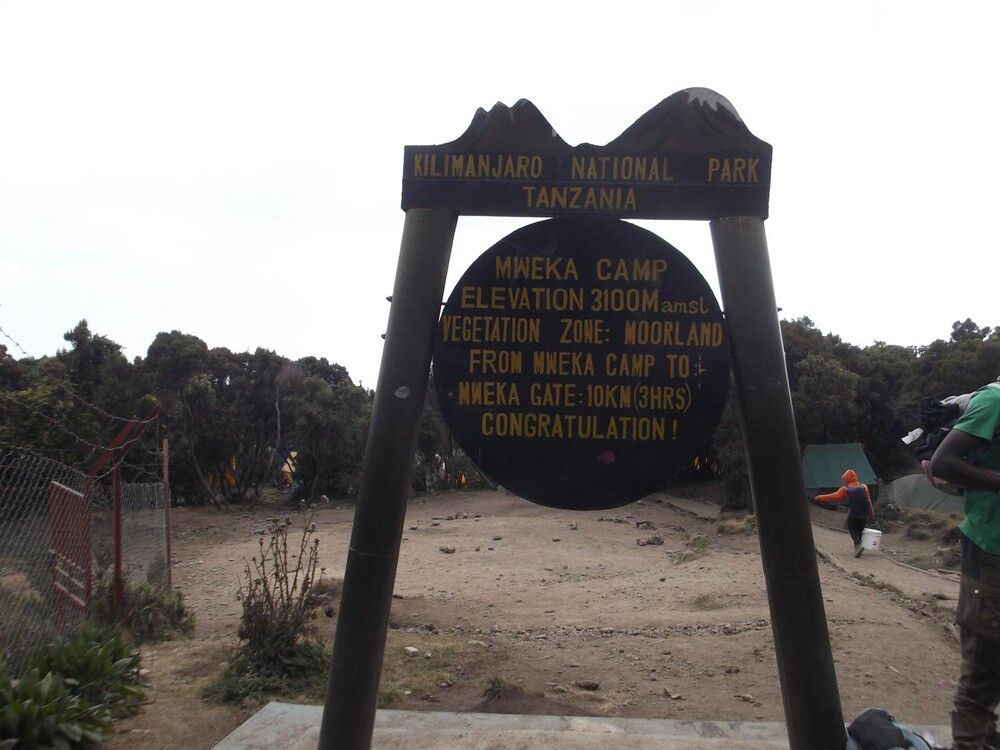
From Mweka Gate to Arusha
Descent and Celebration
After your final mountain breakfast, we descend through the lush rainforest to Mweka Gate, where we'll receive your well-earned summit certificate! A private vehicle will take you back to Arusha. Tonight, relax at the hotel and celebrate your incredible accomplishment.
The trail down passes through lush forests and can be wet and muddy, so gaiters and trekking poles can come in handy for better stability. The weather will be milder here, so you’ll likely be comfortable in shorts and a t-shirt, but keep your rain gear and warmer clothing close by just in case. Once in Mweka Gate, a private vehicle will take us back to our hotel, where we’ll enjoy a relaxed dinner and Arusha. Tonight, relax at the hotel and celebrate your incredible accomplishment and unwind after our incredible adventure.
Elevation: 3,090m → 1,680m
Distance: 10 km
Hiking Time: 3–4 hours
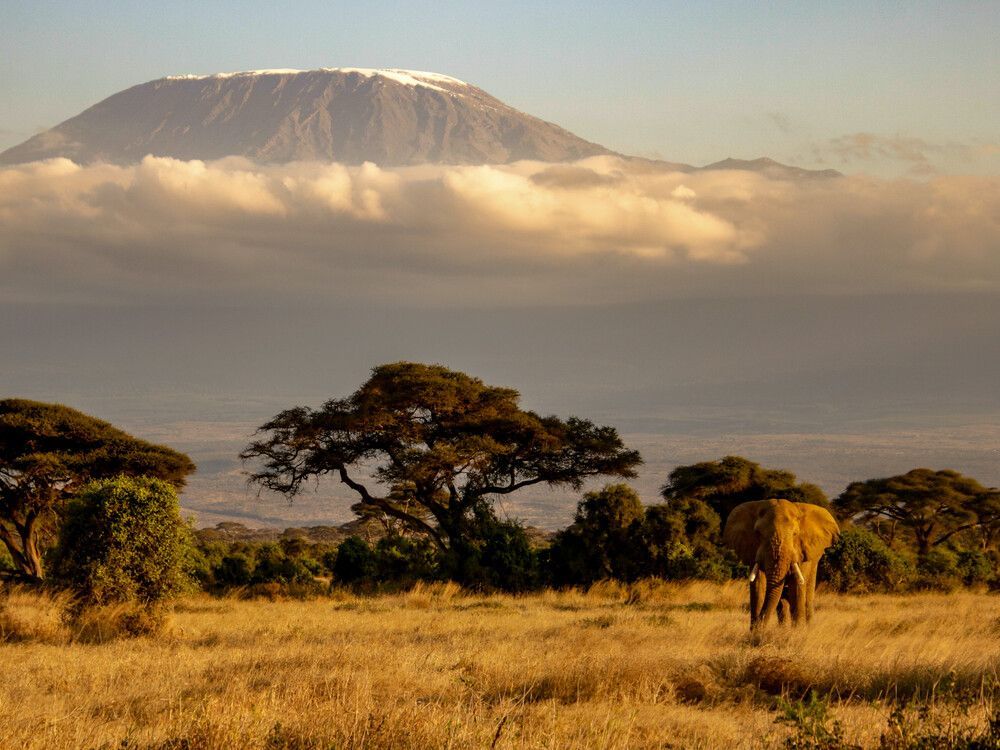
Safari Day: Arusha National Park
Walk and Drive Among Wildlife
After an early breakfast, we depart for Arusha National Park, just a short drive away for our first safari experience. Our adventure begins with a walking safari, led by an expert guide, offering a chance to explore the park's diverse flora, fauna, and natural history. After the walk, we’ll enjoy a picnic lunch surrounded by the park’s beauty. Next, we embark on a guided game drive, where we may spot giraffes, monkeys, colorful birds, and more. Arusha National Park’s stunning landscapes, including Momella Lakes, Mount Meru, and dense forests, offer a unique safari experience. In the late afternoon, we return to our hotel to relax and reflect on the day's adventures.
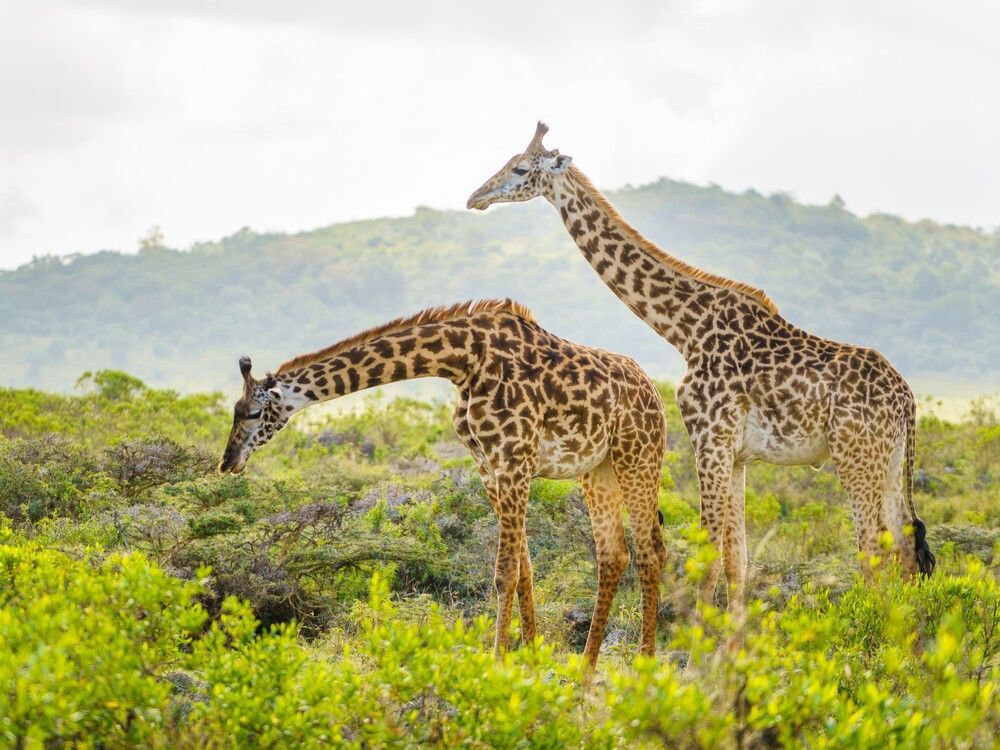
Safari Day: Tarangire National Park
The Land of Elephants and Baobabs
Drive to Tarangire National Park, home to Tanzania’s largest elephant population. Explore this wild haven dotted with ancient baobabs and spot giraffes, lions, and possibly the rare Gerenuk and Oryx. After a full day, head to the accommodation for dinner and stargazing.
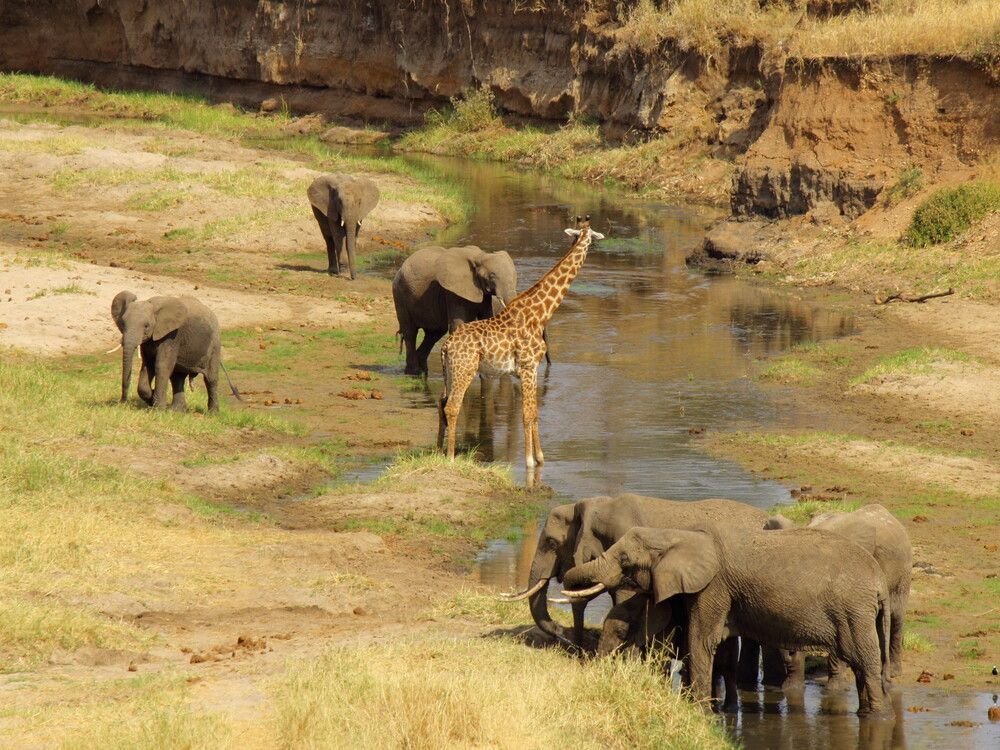
Safari Day: Ngorongoro Crater
Explore a Wildlife Wonderland
Descend into the Ngorongoro Crater, a UNESCO World Heritage site brimming with wildlife, including rhinos, lions, hippos, and flamingos. After a thrilling game drive and picnic by the hippo pool, return to Arusha for a farewell dinner and your final night at the hotel.
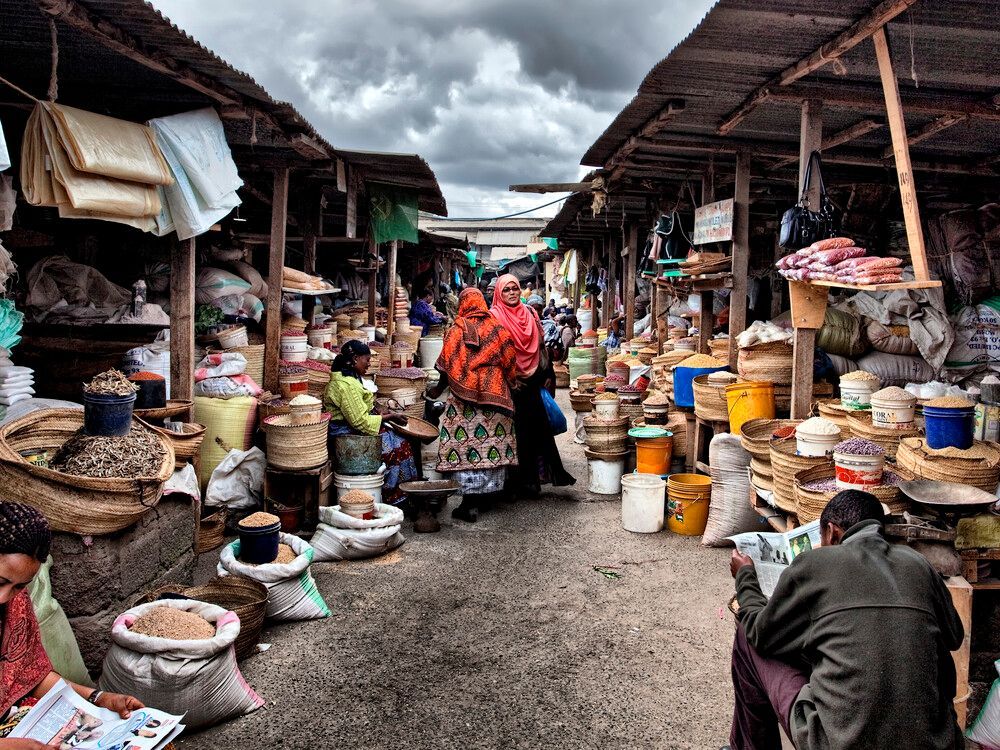
Departure Day
Farewell, Tanzania
As our unforgettable journey comes to a close, we bid farewell to this incredible land that has challenged us on the climb, amazed us with its safari wonders, and offered moments of peace and renewal by the glacier or poolside in such a serene, natural setting. Enjoy a final breakfast before saying goodbye, carrying unforgettable memories of your journey from Kilimanjaro’s summit to the wild plains of Africa.
What's included
All accommodations, including quality, waterproof, four-season mountain sleeping tents (shared) for Kilimanjaro
Kilimanjaro entrance fees and staff, including certified guides, porters, and cook for the climb
Jeep with an English-speaking guide during the safaris
Entrance fees to Ngorongoro Crater, Tarangire National Park, and Arusha National Park
All meals (breakfast, lunch, and dinner) during the climb and safaris, including non-alcoholic drinks on the mountain and beer/wine during the safari
Medical and baggage insurance - (coverage limits by destination country/region - €10,000 Italy, €20,000 Europe, €30,000 World, €50,000 USA/Canada)
What's not included
- Food and beverages when not specified
- All the extras you'll be able to fit in your backpack
- Anything not mentioned in the "What's included" section
Money pot
- Tips
- Coordinator's money pot share
- All extra activities that each member of the group agree on doing and the coordinator's fee as well
Additional info
Accommodation during the Kilimanjaro trek will be in shared two-person tents (ask for an upgrade if private is desired). For the safaris and in Arusha, you will stay in twin rooms at comfortable hotels.
Private transportation will be provided in a mini-van for the transfers, and a jeep will be used for the safari excursions.
- Private Room Option Show all details
Why WeRoad
-
Small groups, on average 11 people
-
Free cancellation included (deposit refunded as a gift card)
-
Book with a £/€100 deposit
The travel coordinators
Find your flight
For this trip, we recommend arriving and departing from these airports.
This is a WeRoadX
A trip designed and created entirely by an experienced WeRoad Travel Coordinator.
This is a trip designed and created entirely by an experienced WeRoad Travel Coordinator. They organise the whole trip: from defining the itinerary to selecting accommodation and on-site experiences. On the WeRoad website you can book the trip and manage it in MyWeRoad, just like any other WeRoad.
FAQs – Frequently Asked Questions
About this trip
This journey begins at Arusha. On the first day, we meet at 18:00.
Your Coordinator will add you to the WhatsApp group for your trip about 15 days before departure.It’s a great way to start getting to know your travel mates, receive more details about the first day’s meeting point, and ask any pre-departure questions you might have.
You can also arrive to Kilimanjaro Airport, and make your way to Arusha from there.
This journey ends at Arusha. On the last day, you are free to leave at any time, so whether you need to book a flight, a train, or wish to continue the journey on your own, you can organize your return as you prefer.
Physical Commitment & Travel Mood
This first part of the trip includes the submit of Mount Kilimanjaro (5,895 meters) where good fitness and a strong spirit of adventure are key to success. While no technical skills are required, the high altitude and multi-day climb demand physical endurance. The safaris are less demanding, offering a chance to enjoy incredible wildlife with ease.
For this itinerary, you can choose the type of luggage you prefer – we always recommend a backpack, but you can also travel with a duffel bag, a holdall, or (it breaks our heart to say it) a cabin trolley case or a checked suitcase, as long as it’s moderate in size. Our Travel Coordinator will suggest the ideal luggage before departure in the WhatsApp group!
About Tanzania
If you are a UK citizen, to find out the entry requirements for Tanzania, you can check this informational page from our partner Sherpa. If you need a visa, you can apply for it through Sherpa. If you are not a UK citizen, you can still use Sherpa by changing the nationality in the 'Passport' section.
Before traveling, always remember to check the government website of your country of origin for updates on the entry requirements for Tanzania – you wouldn’t want to stay home due to a bureaucratic detail!
- UK residents: review the FCDO Travel Advice.
- US residents: consult the US Department of State Travel Advice.
- Other residents: refer to your government or local consulate's travel advice.
Tanzania is in the East Africa Time zone, which is UTC+3. This means that if it is 12pm in the UK, it will be 3pm in Tanzania. If you are in the USA, the time difference will vary depending on your location. For example, if it is 12pm Eastern Time, it will be 7pm in Tanzania. Tanzania does not observe daylight saving time, so these differences remain constant throughout the year.
The currency used in Tanzania is the Tanzanian Shilling (TZS). The exchange rate can vary, but as of the latest update:
- 1 GBP is approximately 3,100 TZS
- 1 USD is around 2,300 TZS
- 1 EUR is about 2,600 TZS
You can exchange currency at banks, exchange bureaus, or major hotels in cities like Dar es Salaam and Arusha. It's a good idea to carry some cash, especially in rural areas where card payments might not be accepted.
In Tanzania, you can pay using cash, credit cards, and mobile payment platforms.
- Cash is king, and the local currency is the Tanzanian Shilling.
- Credit cards are widely accepted in major cities and tourist areas, but not everywhere, so it's a good idea to have some cash on hand.
- Mobile payment services like M-Pesa are also popular and convenient for smaller transactions.
Make sure to check with your bank about any international transaction fees before traveling.
In Tanzania, tipping is not mandatory, but it's appreciated for good service. In restaurants, consider leaving about 5 to 10 percent of the bill as a tip. For guides or safari drivers, a tip of around 10 to 20 USD per day is common. Hotel staff, like porters or housekeeping, will appreciate a small tip, such as 1 to 2 USD. Always tip in Tanzanian Shillings or USD, and give tips directly to the person who helped you.
In Tanzania, Wi-Fi is generally available in hotels, cafes, and some public places in major cities like Dar es Salaam and Arusha. However, the connection can be slow or unreliable, especially in rural areas. For better connectivity, we suggest you buy a local SIM card or an e-SIM data plan. Popular providers include:
- Vodacom
- Airtel
- Tigo
You can purchase these at the airport or in the city, and they offer good coverage and data packages at reasonable prices.
In Tanzania, the official languages are Swahili and English. You'll hear Swahili spoken widely, and it's handy to know a few basic phrases. Here are some useful expressions you might hear or use:
- Hello: Jambo
- Thank you: Asante
- How much is this?: Hii ni kiasi gani?
- Goodbye: Kwaheri
Don't worry if you're not fluent, as many people also speak English, especially in tourist areas.
In Tanzania, the power plugs and sockets are of type D and G. The standard voltage is 230 volts, and the frequency is 50 hertz. If you're coming from a country with different plug types, like those used in the UK or the USA, it's a good idea to bring a universal adapter to ensure your devices can be charged without any issues.
In Tanzania, the main religion is Christianity, followed by Islam. It's important to note that Zanzibar, a semi-autonomous region of Tanzania, has a predominantly Muslim population. If visiting Zanzibar, especially during the holy month of Ramadan, it's respectful to dress modestly. For women, this means covering shoulders and knees. Important religious holidays include Eid al-Fitr and Eid al-Adha for Muslims, and Christmas and Easter for Christians.
For a trip to Tanzania, pack light and suitable items for the tropical climate and diverse landscapes. Here's a list to help you prepare your backpack:
-
Clothing:
- Lightweight shirts and t-shirts
- Long-sleeve shirts for sun and mosquito protection
- Shorts and lightweight pants
- A light jacket for cooler evenings
- Swimwear
-
Shoes:
- Comfortable walking shoes
- Sandals
- Flip-flops for the beach
-
Accessories and Technology:
- Sunglasses and a wide-brimmed hat
- Camera and charger
- Power bank
- Plug adapter (Tanzania uses types D and G plugs)
-
Toiletries and Medication:
- Sunscreen and insect repellent
- Basic toiletries
- Hand sanitizer
- Common travel medication like motion sickness tablets, pain relievers, and anti-diarrheal pills
Remember that Tanzania is a predominantly Muslim country, so dress modestly in public areas, especially women, to respect local customs.
The weather in Tanzania varies by region, so here's a quick breakdown:
- Coastal areas (like Dar es Salaam and Zanzibar): Warm and humid year-round with temperatures ranging from 25°C to 32°C (77°F to 90°F). The best time to visit is during the dry season, from June to October.
- Northern and central regions (like Serengeti and Arusha): Cooler and drier, especially from June to October, with temperatures around 15°C to 25°C (59°F to 77°F). The short rainy season is from November to December, and the long rainy season is from March to May.
- Western areas (like Kigoma): Warm and can be quite humid. The best time to visit is the dry season, from May to October.
For the best experience, plan your visit during the dry season when the weather is most pleasant and wildlife viewing is optimal.
About WeRoad
Round-trip flights are not included in any of our trips because we like to give you autonomy and flexibility: you can choose the airline you want to fly with, the departure airport that suits you best, and how many and which stops you want to make.
Since flights are not included, you also have more flexibility with your travel dates: if possible, you can arrive at your destination a few days earlier or return home a bit later – or even continue independently to a nearby destination!
An "Available" departure means that the trip isn’t confirmed yet and we’re waiting for a few more bookings… maybe yours!
If you book, wait for the trip to be confirmed before booking your international flights!
This is the question of all questions, and here’s the answer, broken down into points!
The Money Pot is a common fund collected in local currency from all tour participants and managed by your Travel Coordinator.
It is used to streamline paymentsfor extra activities, goods and services that the whole group decides to do and to guarantee flexibility in choosing activities and excursions at the destination in line with the mood of the group.
It is typically collected on the first day of the trip in local currency, although at times, the Travel Coordinator may ask for it to be paid before departure.
You’ll find the amount of the money pot on the website under the section ‘What’s included in the money pot’ – how do you get there? Look for ‘What’s included’, scroll down to ‘Money pot? Click here’, and you’ll find the details.
The amount varies depending on the destination chosen.
It is used exclusively for group expenses that ALL participants decide to take part in.
It is estimated based on the experiences of other groups but can vary depending on the needs of the group itself. As such, the Travel Coordinator may need to increase the amount during the trip.
If not all of the money pot is used, the difference will be returned to all participants at the end of the trip in equal amounts.
The Money Pot also covers the Travel Coordinator’s share of the activities included in the money pot, except for those activities that are free for the Travel Coordinator.
If you pay in advance part of the money pot before the trip for certain non-refundable optional activities, unfortunately, the amount cannot be refunded in case of trip cancellation.
We offer several payment methods to fit every need:
1. Credit or debit card (Visa, Mastercard, American Express);
2. Instalment payment with Klarna (you’ll pay for the trip in three equal amounts);
3. PayPal (for selected destinations);
4. Revolut Pay to pay even faster straight from your Revolut account.
Anyone who books a WeRoad trip has the option to cancel or modify the trip – including both the dates and the destination – free of charge up to 31 days before departure. In case of cancellation, you will receive a 100% refund of the WeRoad trip price. (Deposits will be refunded in the form of a gift card valid for 365 days from issue date.) If you make a change, a price adjustment will be applied to the new trip chosen – meaning, if the new trip is cheaper, we will refund the difference; if it’s more expensive, you will need to pay the difference.
If you’ve purchased the Flexible Cancellation Option (which you can add in the first step of the booking process), you can request a cancellation or trip change until 8 days before departure. In case of cancellation, you’ll receive a 100% refund of the WeRoad trip price, minus the cost of the Flexible Cancellation option. Deposits will be refunded in the form of a gift card valid for 365 days from issue date.
How to request a cancellation or change to your trip? Send us an email at [email protected] or a WhatsApp on +447716573700. Please share the booking reference for the trip you want to cancel or change, and, in case of a change, the new trip you would like to join.
In general, we always choose local accommodations, avoiding large hotel chains, because we love to experience the culture of the place and, whenever possible, contribute to the local economy. Typically, our accommodations are hotels, apartments, guesthouses, and hostels run by local entrepreneurs, with the same standard maintained across all trips in the same destination.
For our Collection trips, which are our premium category, the accommodations are always 4 or 5-star or carefully selected boutique hotels.
The list of accommodations for your trip will be shared with you by your Travel Coordinator between 5 and 3 days before departure, along with other useful details for your adventure!
If you're wondering why WeRoad trips have a money pot, we’re assuming you already know what it is. If not, or if you have any doubts, we invite you to read all the information here!
Let’s quickly recap: The Money Pot is a common fund collected in local currency from all tour participants and managed by your Travel Coordinator. It’s used to speed up payments for extra activities, goods and services that the whole group decides to do and to guarantee flexibility in choosing activities and excursions at the destination in line with the mood of the group.
But let’s get to the point: why the money pot? First of all: it gives us a lot of flexibility. In all WeRoad trips you will have a bunch of Must See/Must Do activities already included - these are experiences, places or activities that simply cannot be missed! Any extra activities is decided by the group, why? Because each group is unique and may have particular wants or desires and the Money Pot allows each group to customise their trip to make it perfect for their requirements!
It also helps us speed up payments – imagine being in the subway in New York City, one by one purchasing the ticket...a nightmare right? Thanks to the Money Pot, the Travel Coordinator can simply purchase the tickets for everyone making the entire processes smoother! Any leftover money will be returned at the end of the trip and split equally amongst all participants.
In some destinations, buying goods or services on site is more economical as you are able to negotiate the price - places like Morocco, or South East Asia, bargaining is part of the culture. As such, our Travel Coordinators will be able to secure the best deal for all participants.
The amount of the money pot is specified in each trip – look for this button
which will take you to a detailed breakdown for each trip, like this:
Even if we don't know the flights of all WeRoaders, there are several ways to find out which flights your travel companions have purchased.
1. Each WeRoader has the ability to communicate their flight details after booking within their personal area so that other travel companions can see the details anonymously.
2. If you want to find out before booking, instead, you can contact us and we will support you in your search or you can ask your travel companions for direct information by joining our Facebook group 'WeRoad... let's get to know each other before leaving! (official)' – (here is the extended link: https://www.facebook.com/groups/weroadit) look for a post associated with your trip, or ask the group administrators for help in getting in touch with your future adventure companions!
If the coordinator has already been assigned to the trip you are interested in, you can easily find his/her presentation post in the group through the site: in the shift list click on 'Ask the coordinator', or in the trip tab, in the coordinator section, click on 'Ask [coordinator name] about this shift in our Facebook group'.
On our group trips, the Travel Coordinator and participants speak English – knowing how to speak and understand English is therefore a fundamental requirement to participate in WeRoad.com trips.
On average, groups consist of 12 people, with a minimum of 3-4 participants and a maximum of 18-20 in exceptional cases.
The average age varies depending on the age range indicated for each trip: for 25-35 year-olds, it's usually in their 30s, and for 35+ year-olds, it's around 40. However, if you'd like to know the average age of a group, contact us via WhatsApp at 3484231163.
Regarding the gender mix, there's no guarantee that the group will be balanced, as it all depends on you and on when and what you book! We can, however, reveal a detail: many women book well in advance, while many men often arrive a bit last minute!
Want to know the specific composition of your group? Find out how here.
Yes! If you're curious, you can take a sneak peek at the group before booking – although, in our opinion, that kind of spoils the surprise! You’ll find the info in the ‘Group’ section for each trip on the departures page, showing how many WeRoaders have already booked. Click the little arrow and you’ll even see their gender and ages – but hey, that’s exclusive info, so we’ll ask you to log in or sign up to see that!
The WeRoad Travel Coordinator is an experienced and skilled traveller and will be the perfect companion for your trip. They will be available for any eventuality and will manage all the logistical aspects of the itinerary (transports, timings, accommodations, meeting points, etc.), so you can enjoy the trip without any worries!
You will have the chance to get to know them when the WhatsApp group is created approximately 2 weeks before departure - this will be the moment to ask any pre-departure questions and get to know the rest of the group! If the trip you are interested in already has a Travel Coordinator assigned, you can contact them before booking – their details will be specified in the schedule or on the trip page, or you can search for their name here. After booking, you will find their contact details in your Personal Area, under ‘Bookings and Trips’ > ‘Your Upcoming Trips’ > ‘Trip Details’.
Yes, in all our trips you will share a room with other same-sex travellers, and the bathroom will either be private or shared only with fellow participants of the trip. The rooms we select can be doubles, triples, quadruples, or multi-bed (up to 8 people in exceptional cases), depending on the destination and availability.
There are never dorms with people outside the WeRoad group, except in certain cases for local experiences, which are specifically mentioned in the itinerary or communicated before booking. These typically involve specific nights in unique accommodations like tents, homestays, or camping, offering a more adventurous travel experience in exchange for some comfort.
During the booking process, you can also choose to opt for a mixed room: in this case, if needed, only those who have agreed to this option may share a room with travellers of a different sex. If you are booking for multiple people together and select this option, the room will not be exclusive to your group but may be shared with other travellers in the group.
When you set off on a WeRoad trip, you’re officially a WeRoader – and as we often say, 'Once a WeRoader, always a WeRoader'. This means that once you’re part of the community, a little piece of WeRoad will always stay with you, even if you no longer travel with us.
But you’re not just a WeRoader during your trips, far from it! The community is alive and active all year round: you can stay in touch by following and interacting on our social media channels, like the Facebook group or the Instagram profile. We can also meet up for a dinner or a trek together at one of the events organised by our coordinators around the world!
